Phenacite is a rare and highly sought-after mineral composed of beryllium silicate. Its chemical formula is Be2SiO4. Phenacite is renowned for its exceptional clarity, high refractive index, and brilliance, making it a prized gemstone among collectors and enthusiasts.
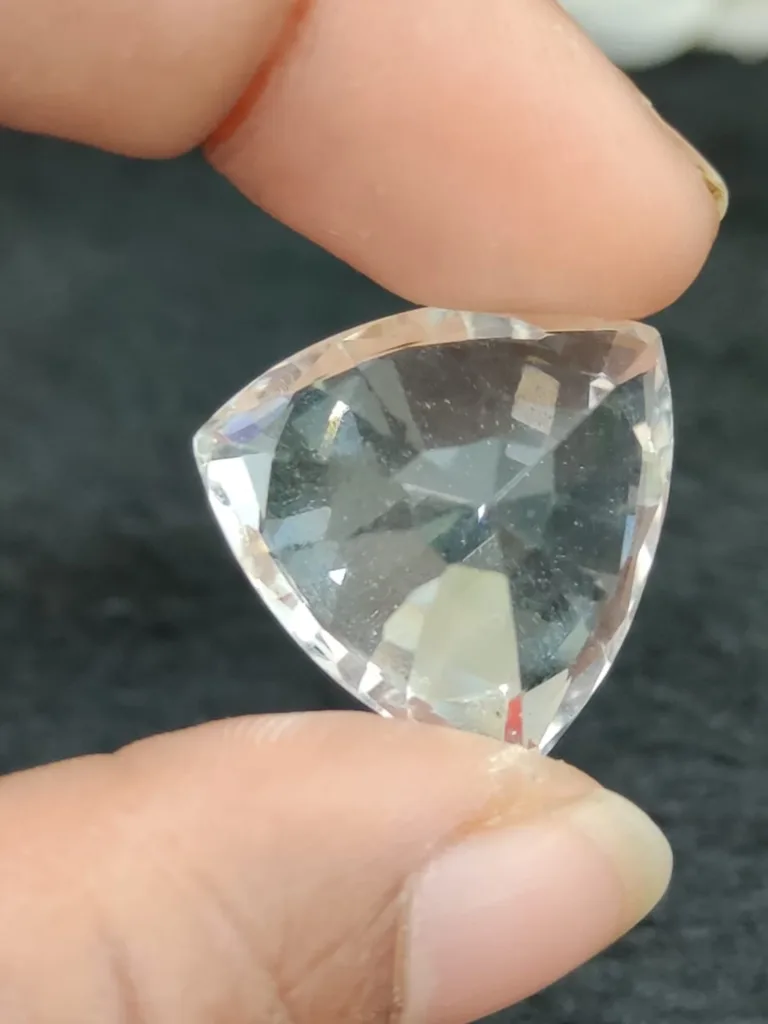
Chemical Composition and Crystal Structure:
Phenacite’s chemical composition consists of beryllium (Be), silicon (Si), and oxygen (O). Structurally, it crystallizes in the hexagonal system, typically forming prismatic crystals with a hexagonal cross-section. These crystals often exhibit well-defined faces and sharp edges. Phenacite’s crystal structure is characterized by its arrangement of beryllium, silicon, and oxygen atoms, forming a framework of interconnected tetrahedra.
Occurrence and Geological Formation:
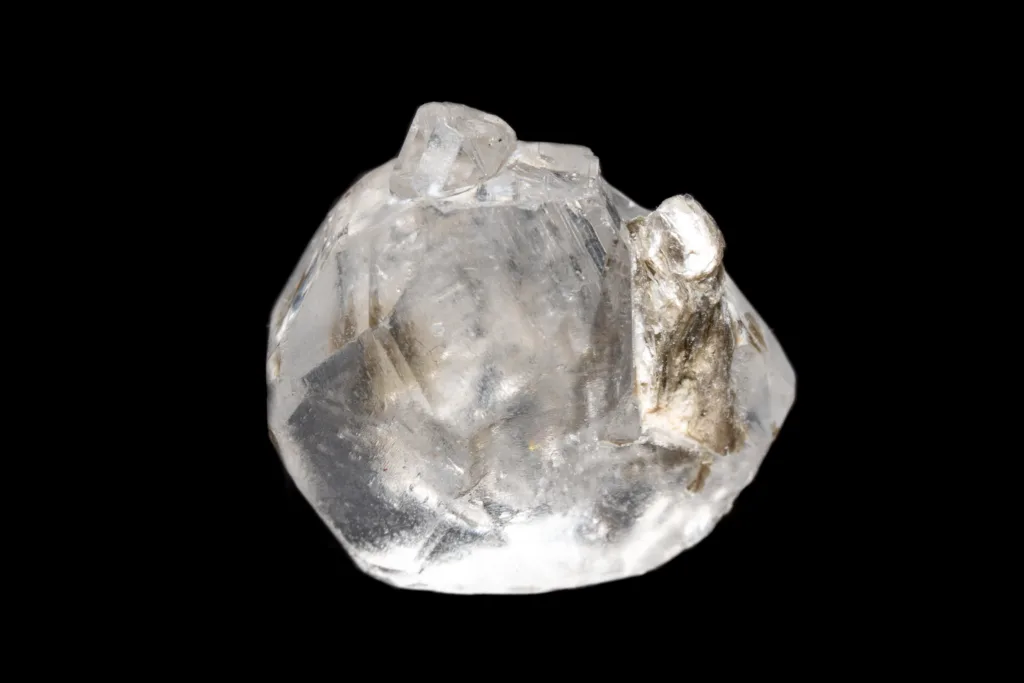
Phenacite is an uncommon mineral, found in relatively few locations worldwide. It primarily occurs in high-temperature pegmatite veins, which are coarse-grained igneous rocks typically found in association with granite. These pegmatites form under specific geological conditions involving the cooling and crystallization of magma enriched with volatile elements such as beryllium. Phenacite often coexists with other minerals such as quartz, feldspar, tourmaline, and mica within these pegmatite deposits.
Notable occurrences of phenacite include Russia, Brazil, Madagascar, Myanmar, and the United States. Mining phenacite can be challenging due to its remote locations, geological complexities, and the often sporadic distribution of the mineral within the pegmatite veins. Despite its rarity, phenacite’s exceptional clarity and brilliance make it a highly valued gemstone in the world of mineralogy and gemology.
Physical Characteristics
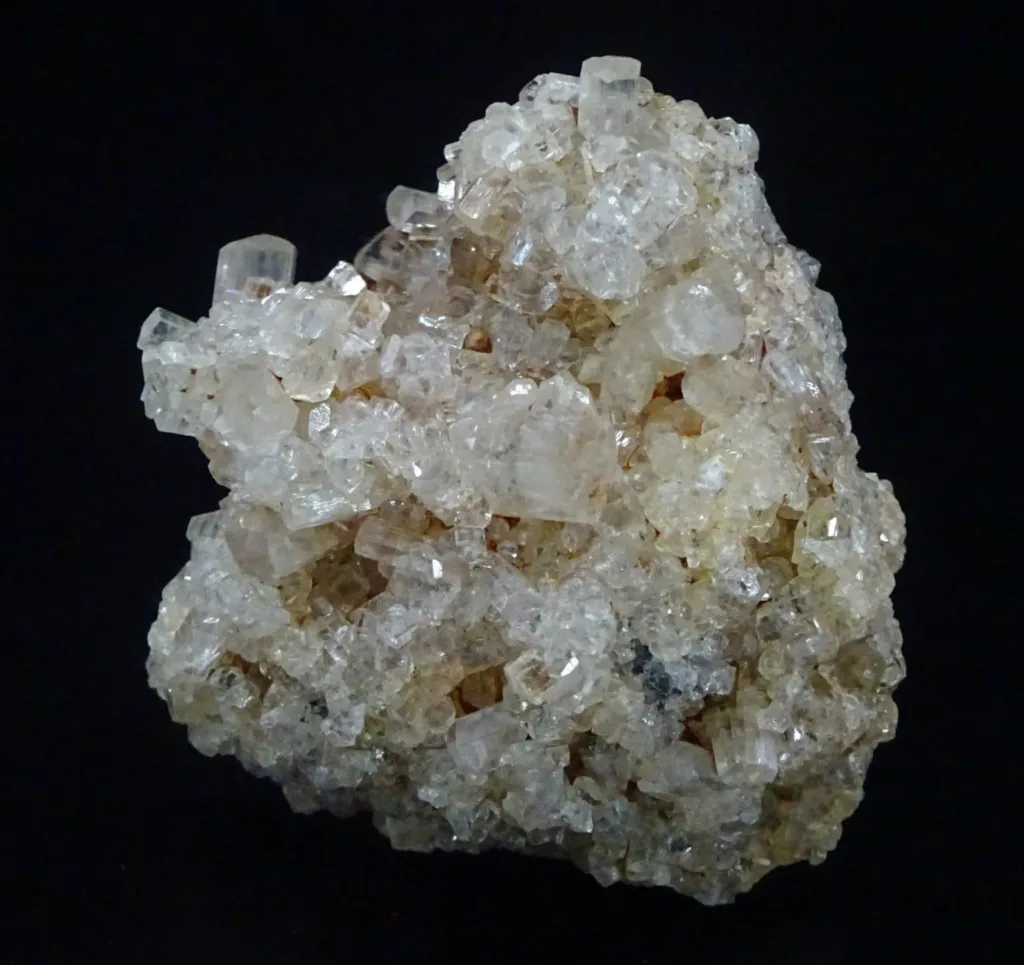
Phenacite exhibits several notable physical characteristics, contributing to its beauty and value as a gemstone. Here are some of its key physical properties:
Transparency and Clarity:
Phenacite is renowned for its exceptional transparency and clarity. High-quality specimens can be virtually flawless, allowing light to pass through with minimal distortion. This transparency enhances the gem’s brilliance and sparkle, making it highly desirable among collectors and jewelry enthusiasts.
Color:
Phenacite occurs in various colors, including colorless, white, pale yellow, pink, and occasionally pale green or blue. However, the most prized and valuable specimens are typically colorless or white. The absence of color allows for maximum light transmission, enhancing the gem’s brilliance.
Lustre:
Phenacite typically exhibits a vitreous to adamantine lustre, giving it a glass-like or diamond-like sparkle when polished. This lustre contributes to the gem’s overall attractiveness and allure when used in jewelry or admired as a specimen.
Hardness:
Phenacite has a hardness of 7.5 to 8 on the Mohs scale, making it relatively hard and durable. This hardness allows it to withstand everyday wear and tear, making it suitable for use in various types of jewelry, including rings, earrings, and pendants.
Crystal Habit:
Phenacite crystals commonly exhibit a prismatic or tabular habit, with well-defined faces and sharp edges. These crystals can vary in size, ranging from small, thumbnail-sized specimens to larger, museum-quality pieces. The distinct crystal habit adds to the gem’s aesthetic appeal and collectability.
Specific Gravity:
The specific gravity of phenacite typically ranges from 2.9 to 3.0, indicating a moderate density. This specific gravity helps gemologists distinguish phenacite from other minerals with similar appearances or properties.
In summary, phenacite’s physical characteristics, including its transparency, color, lustre, hardness, crystal habit, and specific gravity, collectively contribute to its allure and value as a gemstone prized by collectors, lapidaries, and jewelry designers alike.
Geological Distribution
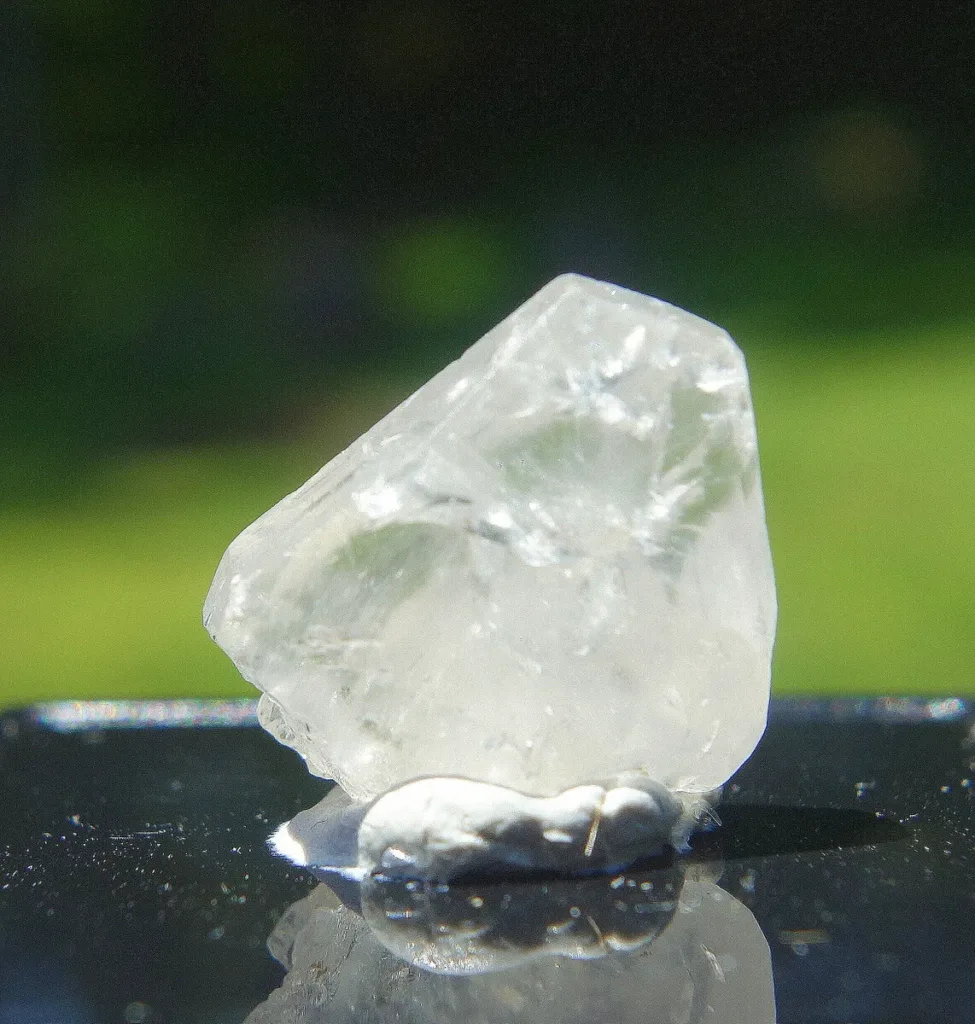
Phenacite is a relatively rare mineral, and its geological distribution is limited to specific regions around the world. Some of the notable locations where phenacite has been found include:
- Russia: Phenacite is notably found in the Ural Mountains region of Russia, particularly in the Ilmen Mountains. Russian phenacite specimens are highly valued for their clarity and size.
- Brazil: Brazil is another significant source of phenacite, with deposits found in Minas Gerais and Bahia states. Brazilian phenacite often occurs in association with other gemstones such as tourmaline and aquamarine.
- Madagascar: Phenacite is also found in Madagascar, particularly in the Antsirabe region. Madagascan phenacite is known for its exceptional clarity and occasional color zoning.
- Myanmar (Burma): Phenacite deposits have been discovered in Myanmar, specifically in the Mogok region. Burmese phenacite is often sought after for its high transparency and colorless appearance.
- United States: In the United States, phenacite has been found in several states, including Colorado, Connecticut, Maine, and New Hampshire. However, these occurrences are relatively small compared to other global sources.
- Other Locations: Phenacite has also been reported in other countries such as Namibia, Zimbabwe, Nigeria, Afghanistan, and Canada, though in lesser quantities compared to the primary producing regions mentioned above.
Overall, phenacite’s geological distribution is relatively sparse, with significant deposits concentrated in specific regions known for their pegmatite formations. These pegmatites are characterized by their high-temperature, high-pressure environments, which facilitate the formation of rare and valuable minerals like phenacite.
Applications and Uses
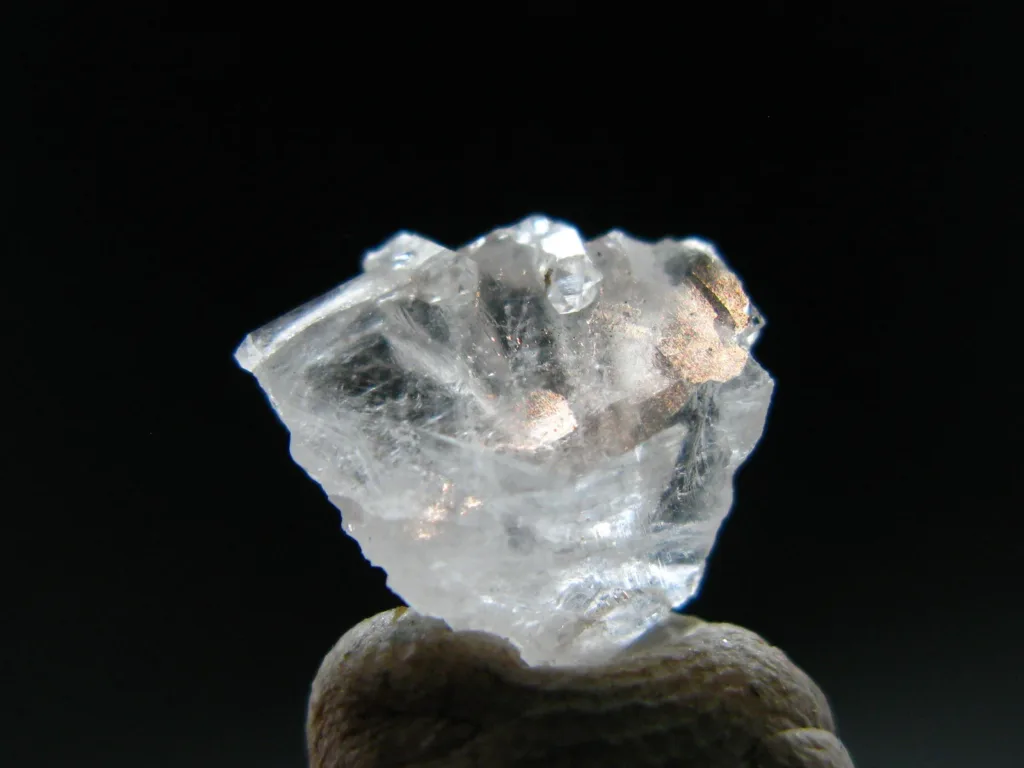
Phenacite, due to its rarity and unique properties, finds various applications and uses, primarily in the fields of gemology, metaphysics, and crystal healing. Here are some of its notable applications:
Gemstone and Jewelry:
- Collector’s Gemstone: High-quality phenacite specimens with exceptional clarity and colorlessness are highly sought after by gemstone collectors due to their rarity and beauty.
- Jewelry: Phenacite, when cut and polished, is used in jewelry settings, including rings, earrings, pendants, and necklaces. Its brilliance and transparency make it an attractive choice for fine jewelry pieces.
Metaphysical and Spiritual Practices:
- Metaphysical Properties: Phenacite is believed to possess metaphysical properties, including enhancing intuition, spiritual growth, and consciousness expansion. It is often used in meditation practices and spiritual ceremonies.
- Chakra Healing: Some practitioners believe that phenacite can help balance and align the chakras, particularly the crown chakra. It is thought to facilitate spiritual awakening and connection to higher realms.
Lapidary and Ornamental:
- Lapidary Art: Phenacite specimens are sometimes used by lapidaries and artisans to create ornamental objects, sculptures, and decorative pieces due to their natural beauty and unique crystal structures.
- Carvings and Sculptures: Craftsmen may carve phenacite crystals into various shapes and sculptures to showcase their aesthetic appeal and geological significance.
Geological and Scientific Studies:
- Mineralogical Research: Phenacite specimens are valuable for mineralogical research, providing insights into the geological processes that lead to their formation within pegmatite deposits.
- Crystallography: Researchers study the crystallographic properties of phenacite crystals to better understand their atomic structure and how it influences their physical and optical characteristics.
Economic and Investment:
- Investment Gemstone: Rare and high-quality phenacite specimens can appreciate in value over time, making them attractive investment options for collectors and investors interested in rare gemstones.
- Gemstone Trade: Phenacite contributes to the gemstone trade, albeit on a smaller scale compared to more common gemstones. Its rarity and beauty make it a desirable addition to gemstone collections and jewelry showcases.
Overall, phenacite’s applications and uses span a wide range of fields, from jewelry and metaphysics to scientific research and investment. Its scarcity and unique properties ensure that it remains a coveted gemstone among enthusiasts and collectors worldwide.




































